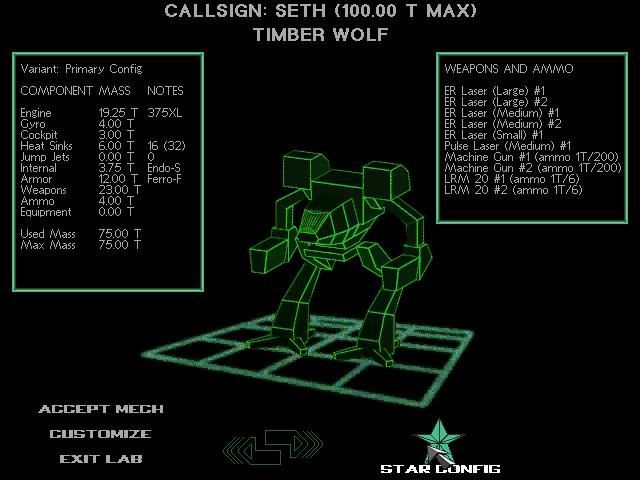The Balzi Rossi Mask is unique among Gravettian art (~33,000 BP - 22,000 BP), mostly characterized by the well known “Venus” figurines. More pictures and text below.
On the Liguria coast to the French border are the entrances of the complex of the caverns of the Balzi Rossi (literally red leaps). The name of the locality derives from the color of the limestone walls that, because of the iron mineral presence oxidises to a red colour. The complex is composed of numerous coves and shelters, including Grotta dei Fanciulli, Riparo Lorenzi, Grotta di Florestano, Grotta del Caviglione, Barma Grande, Barma del Bauso da Ture (now destroyed), Grotta del Principe, Grotta Gerbai, Grotta Costantini, Riparo Mochi, Riparo Bombrini, cavernette della cava, Grotta Voronov, and Grotta Grimaldi. The first searches occurred in 1846-57, by the prince of Monaco, Florestano I. More recently, between 1928 and 1959, regular diggings were executed by A.C. Blanc, L. Cardini and To Mochi, on behalf of the Italian Institute of Human Palaeontology. Louis Alexandre Jullien discovered, between 1883 and 1895, about fifteen figurines, the greatest series ever found in only one place in Western Europe.
Text above adapted from Wikipedia.
Grimaldi Caves.
The cave of Baoussé Rossé (Balzi Rossi, Rochers Rouges, Red Cliffs), to the east of Menton, engraving by Sorrieu, after a photograph of M. Rivière. Date: 1877
Grimaldi Caves.
The caves of Balzi Rossi today.
From west to east, cave of Fanciulli, cave of Florestano and cave of Caviglione in Ventimiglia area, Italy. Date 2008-02-20
Grimaldi figurines. The fourteen Grimaldi statuettes described by White et Bisson (1998):
- The Couple, or the Double Venus
- Woman with the perforated neck
- The Two-Headed Woman
- The yellow steatite statuette, or the Venus of Menton
- Pulcinella or the Venus of Polichinelle
- Brown Ivory Figurine
- The Venus el Rombo, or Venus de Losange, (the diamond, or rhomboid, or lozenge shaped venus)
- The Bust
- The ivory figurine in red ochre
- The flattened figure 11 The Negroid head
- The Hermaphrodite
- The Woman with goitre
- Undescribed figure
The fifteen statuettes were discovered in the sites of Barma Grande, la grotte du Prince, and perhaps le Jardin removed, excavated between 1883 and 1895 by Louis Jullien. At present, seven of them are in the vaults of the Musée des Antiquités Nationales (MAN) at Saint-Germain-en-Laye, one (the Woman with the Perforated Neck, also known as the ‘Janus’ figurine because of the two faces) is in the Peabody Museum of Harvard and the last seven were found in Montreal where Jullien emigrated in about 1898.
The seven Canadian specimens recently surfaced in an antique store in Montreal (Bisson, Bolduc, 1994).They include five representations of women, a possible but uncertain female figure, and a face of indeterminate species and gender. Accompanying documents and interviews with their owners showing that these objects belonged to the collection of Louis Jullien, which had been lost track of in Montreal at the beginning of the 20th Century.
The pieces found are generally in good condition and form a substantial sample of the known Gravettian-Epigravettian female sculptures of Western Europe.
Text above: White et Bisson (1998)
Fig. 13 - Front Views (top) and rear (bottom) of The Figure (coll. Bolduc).
Photo: R. White
Source: White et Bisson (1998)
The Mask, or the Face is a perforated oval disk in the form of a flattened face or mask. It is made of partially translucent green-yellow to yellow chlorite. Variations in the colour and translucence of this material make the observation of detail on darker areas very difficult. The specimen measures 19.1 mm from the top of the forehead to the chin, is 23.2 mm wide, and varies between 3 and 5 mm thick, and its weight is 2.80 g. Although it had been thoroughly cleaned, minute traces of fine-grained, yellow, sandy sediment were detected in one nostril, and microscopic traces of red ochre as well as coarse red sediment were preserved in a number of incisions. The front of this piece is highly polished.
It is flat in profile, with the exception of a carefully shaped bulge in the centre forming a blunt nose. Perforations create the eyes and a mouth. The eyes are circular, ca. 2.4 mm in diameter, and have small notches in the upper lateral comers. This gives them an animal rather than a human appearance. A series of incised lines radiates from the centre of the face across each cheek. A deep, circular hole is situated in the centre of the forehead. Incised lines radiate from this hole, particularly up the forehead. Although now empty, this hole may originally have contained an inlay of some perishable material. The upper margin of the forehead is demarcated by a dashed line. The nose has a faint bridge and small, widely spaced nostrils. The mouth is set in a wide, deep, slightly upturned incision. Very fine serrations on the lower margin of the mouth may indicate teeth.
The reverse side of the face has no facial details and was clearly not designed to be viewed. A series of larger holes was drilled over the perforations in order to thin the stone to facilitate carving of the sharp comers on the eyes and mouth. A deep diagonal incision of unknown function runs along the upper right margin. What this piece represents is uncertain. The radiating incisions on the forehead and sides of the face do not occur in any of the detailed Gravettian human faces from Grimaldi or Brassempouy (Delporte1993) and thus may indicate a face covered with hair. The eyes, nose, and mouth have a vaguely feline appearance, but the lack of ears makes that identification uncertain. It may therefore be either a stylised human or an animal.
It should also be noted that this specimen is unlike any other in Gravettian art and must therefore be treated with some caution. To date, we have been unable to prove that it is a fake. It may be more recent than the statuettes and have come from the rich Early Epigravettian deposits excavated by Jullien in the upper levels of the Barma Grande, but without better provenience information we may never know its precise date and associations.
This is the only one of the pieces discovered by Louis Alexandre Jullien at the Balzi Rossi that does not fit the theme of the Palaeolithic Venus. Fashioned from a small thin pebble, it is a sparse representation of a grimacing face that seems to convey a curious impression of cruelty, or even diabolism.
The eyes and mouth, rendered by perforations, are set off by deep lateral slits that serve to heighten the menacing, cruel aspect of the face - that most likely belongs to an imaginary animal. A depression (its purpose unknown) has been hollowed out between the eyes; below this, a small protuberance corresponds to the nose, the nostrils being marked by two little holes. Finally, a complex series of fine incisions on the lips, under the eyes and on the periphery of the principal features completes this extraordinary countenance, which is, at present, unparalleled in the annals of Western Europe’s Palaeolithic age.
Carved on a lightly mottled (greenish-yellow), translucent chlorite pebble, The Mask is approximately 23 millimetres wide.
Despite the cleaning by Jullien, tiny traces of fine-grained yellow sand were detected in a groove. Microscopic traces of red ochre, like a red sediment, were preserved in many incisions. The front of this piece is extremely abraded. In profile, the surface is flat, except for the centre, where, a well shaped 'bulb, represents a flattened nose. The eyes and mouth are perforations in the piece. The eyes are roughly circular and measure 2.4 mm in diameter. There are small lateral notches formed in the upper corner of the eye. These give the figure a look more animal than human.
Two series of parallel incisions cover the cheeks. A deep circular hole is located in the center of the forehead. Other incisions radiate from the hole, especially above the forehead. This hole is empty, but it may well have contained an inclusion or perishable materials. The upper part of the forehead is delimited by a broken line. The area between the wide nostrils is raised. The mouth, with a broad and deep incision, appears slightly upturned.
On the other side of the piece there are no facial features. Apparently it was not meant to be seen. A series of large holes at the level of the eyes and mouth corresponds to what may be a surface preparation: thinning to facilitate the notches for the eyes (?). A deep horizontal incision occurs on the upper part of the piece without any apparent function. What this represents is uncertain.
The radiating incisions on the forehead as well as on the cheeks are not commonly found details on the faces of the Grimaldi and Brassempouy figurines (Delporte 1993b). Thus, this type of line could indicate a face covered with hair. Eyes, nose and mouth have a vaguely feline appearance, but the lack of ears makes interpretation uncertain. This could be a stylized human or animal. Also note that this type of representation is the only one ever found so far in the Epigravettian. From this point of view, this specimen should be treated with caution.
The rediscovered ivory and soft stone figurines.
Photo: J. Cinq-Mars, © Pierre Bolduc, Montreal
Presently held: In private hands, joint property of Pierre Bolduc who found them in a Montreal antique shop, and the descendants (Laurence and Lucie) of Louis Alexandre Jullien, who dug them up. The Bust, Nun, Armless Lady, Ochre Lady, Two-Headed Lady, Couple, and the Mask were displayed in an exhibition at the Canadian Museum of History, Gatineau, Canada, in 1995.
all sourced from the magnificent web 1.0 gem donsmaps dot com  HIGHLY RECOMMENDED
HIGHLY RECOMMENDED






